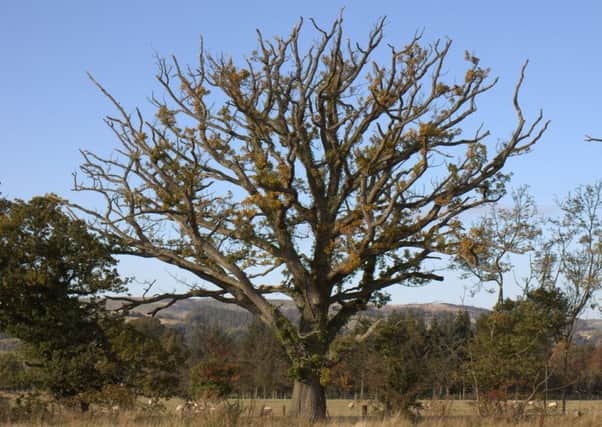Scientists in £1m bid to save oak trees from deadly diseases


The oak, which can live for hundreds of years, is facing an increasing barrage of threats from recently identified pests and infections, many of which are still poorly understood.
Experts fear the species, one of our commonest, is at risk of being wiped out if action is not taken immediately.
Advertisement
Hide AdAdvertisement
Hide AdNow they aim to tackle the problem with a major research project geared towards halting the spread of new infestations, including acute oak decline (AOD).
The bacterial infection was first found in Britain 0 years ago and can kill trees within five years of symptoms arising. There is no known cure. It is thought warming temperatures and increasingly damp conditions, plus ever-increasing international movement, are driving the spread of novel bugs and viruses.
The new project is being led by the University of Reading, with collaboration from the James Hutton Institute in Dundee and Aberdeen, and will harness world-leading expertise in microbiology, climate science and forestry to find solutions to the growing problem of AOD and other tree health issues.
Rather than focusing on a single solution, it will look at a range of options to save the oak, including identifying future disease hotspots and planning how to respond.
Plant and soil ecologist Dr Ruth Mitchell and her team at Scotland’s James Hutton Institute will be looking at the ecological implications of a decline in oak trees, which provide a habitat for a wide range of other wildlife.
“In fact oak is thought to host the greatest number of species – insects, mosses, lichens, fungi than any other tree species in the UK,” she said.
“For species that only use oak, a decline in oak populations could potentially have a big impact on the abundance of these species.
“Thus AOD could be a threat to many more species than just oak. If we can identify other tree species that species that use oak will use it may be that we can mitigate some of the ecological impacts of AOD.”
Advertisement
Hide AdAdvertisement
Hide AdThe team has done similar work on the ecological impact of ash dieback. It is thought a couple of bacteria species are responsible for causing AOD. Affected trees have vertical, weeping fissures that seep black fluid down the trunk.
The disease has not yet been seen in Scotland. It is most common in the Midlands and south-east England, but has spread northwards and into Wales in recent years.